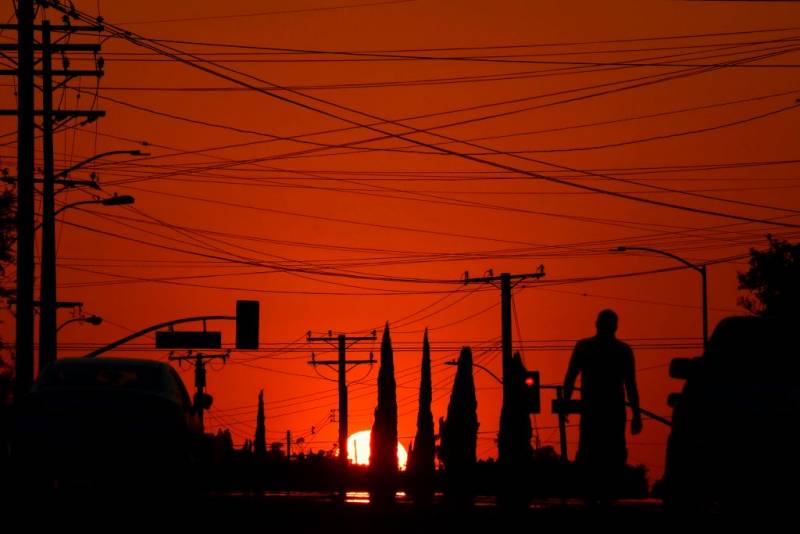At the same time, a software problem signaled that California had excess power that it could comfortably export to other states. As it turned out, though, power demand in California exceeded what was actually available. The report cited “convergence bidding,” a financial tool that energy traders use to bet on what the state’s power needs will be for the following day. Although intended to help keep electricity prices stable, the mechanism instead “masked tight supply conditions” during the August heat wave, the analysis concluded. California ISO later said it had fixed the software flaw.
Western states routinely exchange power. To keep up with its massive energy needs in real time, California imports more power from its neighbors — mainly Nevada and Arizona — than any other state. It also returns the favor, exporting excess power when neighbors need it.
But last summer’s rolling blackouts accelerated debate over California’s role in moving power across state lines when demand spikes.
“The fact that they prioritized exports at the expense of [California’s] load is mind-boggling,” said Rick Humphreys, a retired engineer and power reliability expert. “Where’s the dividing line between being nice to your neighbors and being overly nice to your neighbors at the expense of California customers?”
Even after months of meetings, stakeholder calls and workshops aimed at ensuring the state’s grid operators and regulators are prepared for this summer, the debate is expected to continue well into next year. For now, California ISO has proposed temporary changes to market rules that aim to prioritize California’s needs, including some restrictions on trades that use California’s grid as a pathway to transport power from one state to another — known as “wheel-through transactions.”
“It is critical the CAISO have reasonable measures in place to address this situation more effectively,” the grid operator wrote in a proposal it has asked the Federal Energy Regulatory Commission to approve by the end of this month.
Going into this summer, California ISO and the CPUC’s Energy Division have at times clashed over the specifics of the updated rules. While the CPUC has been generally supportive of the proposed changes, it has also questioned whether they go far enough, specifically raising concerns that they will still prioritize wheel-through transactions over the state’s needs.
“If allowed to continue, [this] will seriously jeopardize reliability in the state and undermine the resource adequacy and transmission planning processes,” CPUC regulatory analyst Michele Kito wrote in recent comments on California ISO’s market reform proposal.
Conditions in the run-up to last summer’s rolling blackouts — when California ISO allowed exports of more than 4,000 megawatts of electricity (enough to power approximately 3 million homes) — serve as an example of what happens when exports and wheel-through trades are given priority during tight conditions, Kito wrote. “A durable solution will need to be developed.”
California ISO has expressed confidence that its changes will help California through this summer, despite reduced hydropower capacity due to drought conditions.
“We are members of a vastly interwoven western electricity market, both importing and exporting energy. Our transmission system is built to accomplish that,” California ISO President and CEO Elliot Mainzer said on a media call Wednesday afternoon. But he also signaled that the status quo may be changing. “We are really moving into a mode where what we used to consider one-in-30-year events are becoming truly a new normal, which will force some level of rethinking of what that dependency could look like.”

